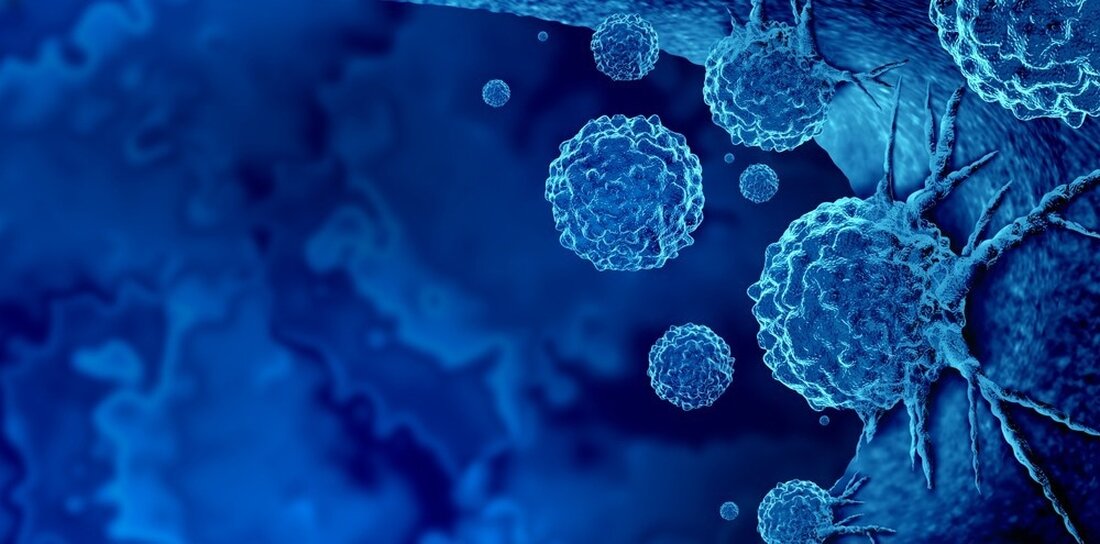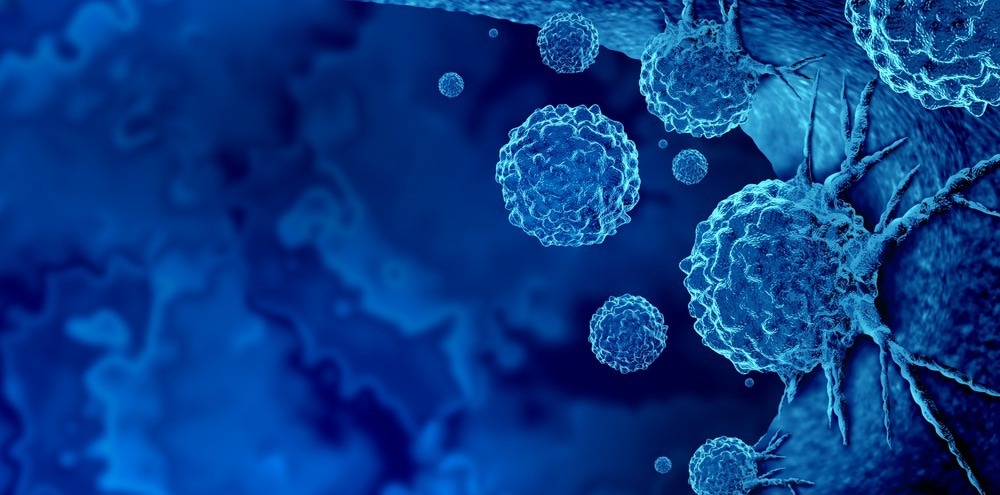Researchers are developing a new method to map the spatial development of cancer
In a recent study published in Nature, researchers developed a genetic clone mapping workflow that focuses on base-specific in situ sequencing (BaSISS) technology to derive quantitative maps of multiple genetic clones of cancer cells. Learning: Spatial genomics maps the structure, nature and evolution of cancer clones. Image credit: Lightspring/Shutterstock Background Cancerous or neoplastic cells are dynamic entities that constantly change and reshape their interactions with their microenvironment. These cells have multiple subclonal populations, which are genetically related but distinct groups of cells. While genomic technologies such as whole genome sequencing (WGS) have discovered subclones, they appear unable to...

Researchers are developing a new method to map the spatial development of cancer
In a recently published study in Nature Researchers developed a genetic clone mapping workflow that focuses on base-specific in situ sequencing (BaSISS) technology to derive quantitative maps of multiple genetic clones of cancer cells.

Lernen: Räumliche Genomik bildet die Struktur, Natur und Entwicklung von Krebsklonen ab. Bildnachweis: Lightspring/Shutterstock
background
Cancerous or neoplastic cells are dynamic entities that constantly change and reshape their interactions with their microenvironment. These cells have multiple subclonal populations, which are genetically related but distinct groups of cells.
Although genomic technologies such as whole genome sequencing (WGS) have discovered subclones, they appear unable to decipher their phenotypic properties and interactions within tissue ecosystems. This is a major limitation because all characteristics of cancer subclones are determinants of cancer growth, progression, recurrence, or adverse outcomes.
BaSISS workflow
The BaSISS targeted subclones identified by a WGS-derived phylogenetic tree. BaSISS mutation-specific padlock probes first hybridized in situ with complementary DNA (cDNA) from mutant and wild-type alleles of clone-defining somatic variants. All fully targeted complementary padlock probes ligated and formed closed circles.
Subsequently, fluorophore-labeled interrogation probes and cyclic microscopy detected unique four- to five-nucleotide-long reader barcodes from ligated probes that were amplified by rolling circle amplification, allowing multiplexing. The team used mathematical modeling to create clone maps using BaSISS signals and the clone genotypes.
About studying
In the present study, researchers collected eight tissue blocks from two patients (P1 and P2) who underwent surgical mastectomy for multifocal breast cancer. These tissue samples included three histologic stages of early cancer progression: ductal carcinoma in situ (DCIS), invasive cancer, and lymph node metastases.
On three samples of P1, P1-estrogen receptor (ER)1, P1-ER2, and P1-D1, WGS experiments identified mutation clusters associated with six phylogenetic tree branches. BaSISS padlock probes targeted 51 alleles on each phylogenetic tree branch. The team identified a subclone based on a patient identifier and the color of the corresponding phylogenetic tree node.
Specifically, different colors labeled on P1 denote a node. B. P1-purple, P1-red, P1-gray, P1-orange, P1-green and P1-blue. Likewise, a subclone genotype included the branch mutations that accumulated as one moved from the tree root to the subclone node. For example, P1 green contained gray, blue, and green branching mutations.
The team examined three primary breast cancer (PBC) samples with mixed invasive and DCIS histology: P1-ER1, P1-ER2 and P2 triple-negative (TN)1, to show that BaSISS could record the evolution of different cancer stages across entire tissue sections. In addition, researchers integrated spatial data to determine how phenotypic changes are related to genetic state and histological state transitions.
DCIS is known to be genetically heterogeneous, but how DCIS clones organize and grow through the broader canal system remains unclear. So the team examined three DCIS samples from P1 (P1-D1, P1-D2 and P1-D3) that spanned a tissue surface area of 224 mm2. Finally, the team performed spatial gene expression analysis using targeted in situ sequencing (ISS).
Study results
Genetics & Genomics eBook
Compilation of the top interviews, articles and news from the last year. Download a free copy
Almost 97% of the detected BaSISS spot signals were converted into understandable barcodes. Its mean target-specific coverage was 13,000 times higher per 300 mm2 of breast tissue. Furthermore, the variant allele fractions derived from BaSISS showed strong association across replicate experiments on serial tissue sections, demonstrating their quantitative reproducibility. The BaSISS signals colored according to their subclonal mutation branch showed a visual insight into the subclonal growth structure.
The clone mapping algorithm also discretely adjusted the observed allele frequencies for a number of biases (e.g., different sensitivity of the BaSISS probe). However, the BaSISS-modeled allele frequencies were in close agreement with the laser capture microdissection (LCM) and WGS validation data.
Consistent with bulk WGS data, BaSISS detected two to four subclones per PBC. Quantitative examination revealed that individual subclones formed spatial patterns that were related to the histological progression of cancer conditions. For example, in P1-ER2, a region with hyperplasia was not genetically related to cancer, as confirmed by LCM-WGS. In all PBC, the genetic and histological progression models were largely stable. The invasive cancer consisted primarily of cells from the most recently diverged subclone.
Conversely, earlier divergent clones fully or partially colocalized with the DCIS. However, one subclone in each PBC included both DCIS and invasive histology. It suggested that separate histological and genetic progression stages may also exist. Examples include clone P1-red in P1-ER1 and clone P1-purple in P1-ER2.
Regarding phenotypic changes associated with cancer invasion, researchers observed that phosphatase and tensin homolog (PTEN) mutant clonal regions had denser Ki-67 immunohistochemistry (IHC) nuclear staining than wild-type regions. Upregulation of Ki-67, another genetic clone, was temporally related to the acquisition of a PTEN mutation and preceded invasion.
P1 orange epithelial cells showed higher expression of the cell cycle regulatory oncogenes cyclin D1 (CCND1) and cyclin B1 (CCNB1) and the oncogene zinc finger protein 3 (ZNF703), which were associated with adverse clinical outcomes. Overall, architectural and nuclear appearances and gene expression profiles were remarkably lineage-specific, and their distinct patterns could also be visualized spatially.
Analysis of sample P2-LN1 with BaSISS discovered two clones (P2-blue and P2-orange) that formed spatially separate patterns. Histological annotation using hematoxylin&eosin (H&E), lymphocyte common antigen (CD45), and pan-cytokeratin stains identified multiple metastatic cancer growth patterns. The authors found strong associations between these two discovered clones and their histological growth patterns.
Furthermore, they found that clone-specific gene expression patterns of 17/91 genes were recapitulated within multiple, spatially distinct extents across more than 1 cm2 of tumor tissue. Overall, the BaSISS clone maps spatially related genetic variations in microenvironments to individual clones.
Conclusions
LCM, a histology-guided sampling technique, does not provide an unbiased representation of cancer subclonal areas, particularly across entire tumor sections. BaSISS, on the other hand, examined large square centimeter tissue sections, which made it possible to examine entire cross sections of smaller tumors. It is also relatively inexpensive and does not rely exclusively on WGS-based methods.
In summary, BaSISS is a valuable addition to the spatial omics toolkit thanks to its remarkable ability to spatially localize multiple distinct cancer subclones and even characterize them molecularly. In the future, its widespread use could help reveal how cancer grows in different tissues, which in turn could help track down the unfortunate subclones that cause adverse clinical outcomes.
Reference:
- Lomakin, A. et al. (2022) „Räumliche Genomik bildet die Struktur, Natur und Entwicklung von Krebsklonen ab“, Nature. doi: 10.1038/s41586-022-05425-2. https://www.nature.com/articles/s41586-022-05425-2
.

 Suche
Suche
 Mein Konto
Mein Konto
